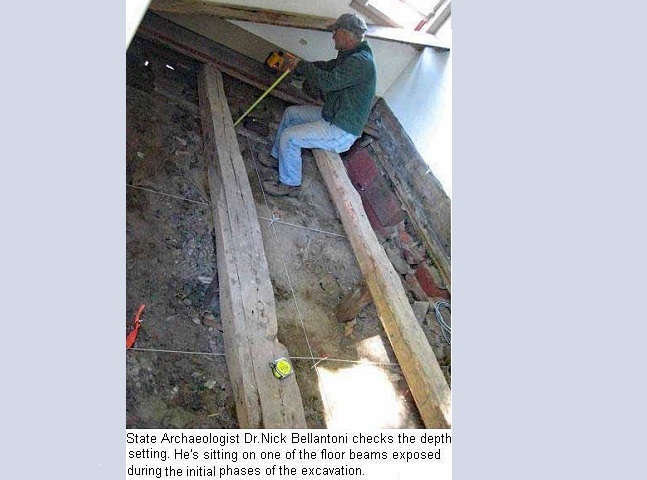Digs: Site Activities
SELECTED DIGS' PHOTOS - May 14-15, 2013, Strong-Howard House, Windsor CT





The approximate manufacture date of a kaolin clay pipestem fragment ("A" in the image) can be determined by measuring the inner diameter. In this case, that diameter (5/64 of an inch) suggests a manufacture date of between 1720 and 1750 ("B" in the image).

More screening being photographed. FOSA member Glenda Rose is assisting here.



Nick Bellantoni and others examine the soil beneath the floor beams.

Additional sampling of soils beneath the floor beams..

End of a day at the site, with the soil area cleaned and the next day's grid areas marked.